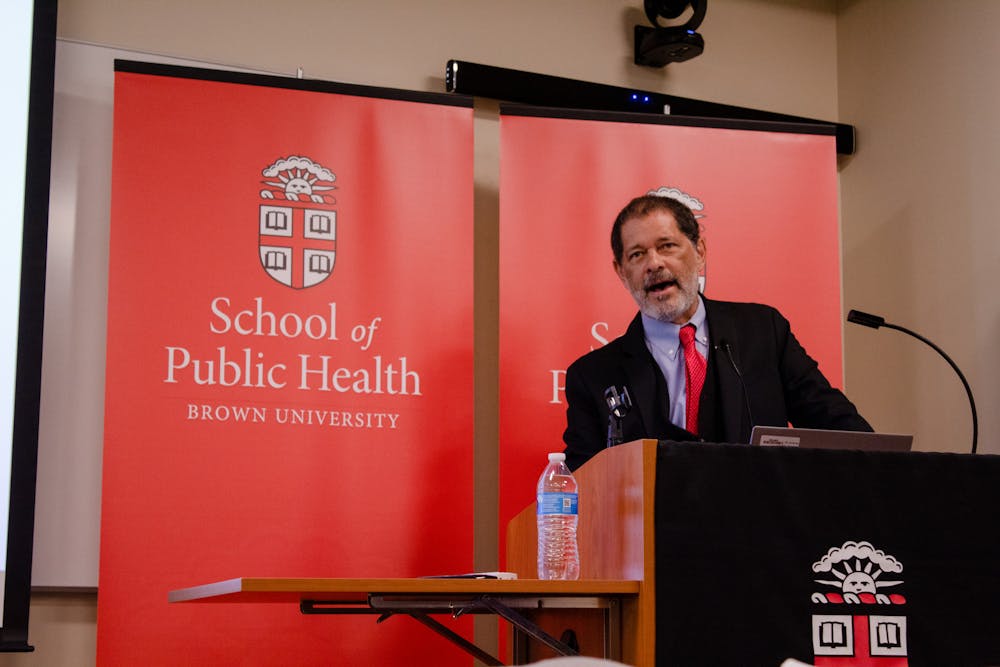Frank Richards, senior advisor at the Carter Center, a health advocacy organization, spoke on the history and spread of river blindness and the transatlantic slave trade at the annual School of Public Health Black History Month lecture Tuesday afternoon.
Onchocerciasis, more commonly known as river blindness, is a disease spread by parasites found in the Americas and Africa. Its namesake symptom, blindness, is accompanied by severe skin disfigurement and itching.
During his lecture, Richards used DNA sequencing studies to discuss how river blindness in the Americas is a product of the slave trade, as “human encounters with competent (river blindness) vectors were facilitated by (formerly enslaved people) who still harbored O. volvulus worms” — the parasites responsible for onchocerciasis — from Africa.
Richards explained how sites where river blindness was concentrated in the Americas prior to disease elimination efforts coincided with the geographic distribution of formerly enslaved communities.
As director of the Carter Center’s River Blindness Elimination Program from 2005 to 2020, Richards headed mass drug administration programs using ivermectin, a drug proven to treat the disease.
Richards explained that successful mass drug administration requires community-level action — all community members must take treatments to stop the spread of an infectious disease. These programs have found success within South and Central America, causing 94% of the at-risk population in the Americas to no longer require treatment, according to Richards. The communities in which river blindness persists in the Americas today are largely located in remote areas of the Amazon, he added.
According to Richards, attempting to reach complete disease elimination faces struggles and diminishing returns. Like with any disease, total elimination efforts of river blindness attract controversy due to their costliness, he added.
But completely eliminating a disease comes with significant payoffs for health equity, Richards explained. “Elimination programs are one of the greatest accomplishments you could have in public health,” he said.
Throughout the lecture, Richards reminded audience members of the Carter Center’s founder and and former president Jimmy Carter’s significance in combating river blindness, recalling that he was “essential for advocacy, for the news media wanting to know what is going on, for political support … and access to donors.”
Audience members found the historical lens of the lecture particularly insightful. Levell Williams GS, a second-year MPH student and health equity scholar, said he appreciated “the (elements) of history and epidemiology and how those can relate to one another” in the lecture.
First-year MPH student Nadia Tsado GS, who also attended the lecture, told The Herald that it is “always important to look at the historical context of any disease or ailment that you're looking at. … That tells a bigger picture.”

Ryan Doherty is the managing editor of digital content and vice president of The Herald's 135th editorial board. He is a junior from Carmel, NY who is concentrating in chemistry and economics. He previously served as a university news and science & research editor, covering faculty and higher education.





